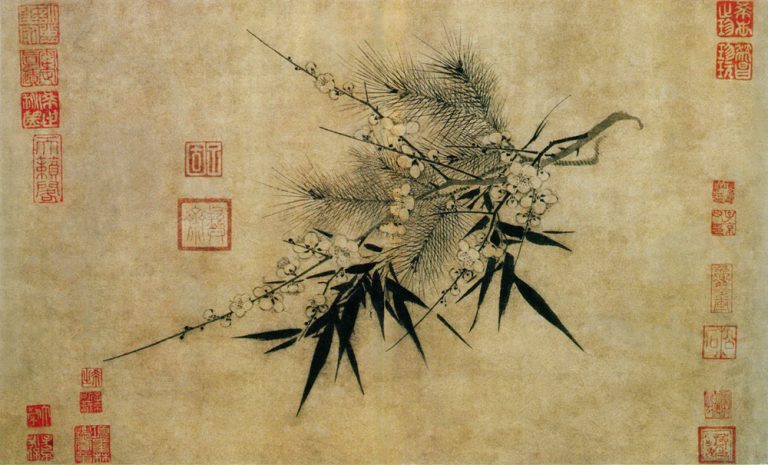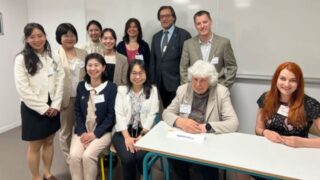Since the 19th century, Theosophy and other spiritual organizations have promoted universal brotherhood. So does today Tai Ji Men.
by Karolina Maria Hess*
* Introduction to the international webinar “Will Tai Ji Men Finally Be Allowed to Live in Peace?”, co-organized by CESNUR and Human Rights Without Frontiers on May 16, 2023, International Day of Living Together in Peace.


The United Nations General Assembly declared 16 May the International Day of Living Together in Peace in its resolution 72/130 of 2017.
What is the focus of this day, besides the general idea of world peace? The special day underlines the need to accept the differences between people, groups, and cultures—embracing them, respecting them, and listening to them. While one might say that the idea of world peace is common to all cultures, this does not mean that we should try to ignore their differences. The purpose of this day is precisely to emphasize that we are beautifully different from each other, and yet achieving peace is possible.
Peace is a noble idea, but also a practical necessity to be able to live and realize our full potential as human beings. Without peace there is no freedom. In times of war and conflict, basic human rights are violated. In this sense, the idea and need for peace transcends all cultures and times; it is supra-national and supra-religious. But it is religions and various currents of spirituality that often emphasize peace, or make it their main aim, as other institutions of social life, while often focusing on material conditions, may derive profits or political benefits from conflicts.
To fully understand the need for tolerance, inclusion, and the beauty of diversity, one needs to be aware of these circumstances. In the middle of the 19th century, when people in the West became more and more aware of the religious and philosophical systems of the East, there was a need not only to understand them, but also to reconcile in the Western awareness the existence of so many important and valuable currents of thought and religion existing simultaneously throughout the world. When universities developed academic studies of comparative religions, spiritual currents also appeared, the aim of which was, on the one hand, to appreciate this diversity, and on the other to find some common core of all religions.
Undoubtedly, an important cultural phenomenon in this respect was Theosophy, a current built around the charismatic figure of Helena Petrovna Blavatsky (1831–1891). One of the basic tenets of Theosophy was the benefits one can derive from the comparative study of religions and philosophies. But what constituted the inalienable core of Theosophy, and the most important goal of the Theosophical Society, was the realization of universal brotherhood. It was impossible to become a Theosophist if one did not accept the goal of equality of people regardless of race, creed, sex, caste, or color.


A number of initiatives and institutions subordinated to this aim, stemming from the philosophical core of Theosophy—the unity of all beings—were implemented to achieve this goal. Despite studies on diversity, it was still needed to carry out practical initiative to promote the idea that the common need of humanity is peace and universal brotherhood.
The continuator and promoter of the idea of peace and its practical implementation was another Theosophist, Nicholas Roerich (1874–1947). Roerich was mostly known as a painter, but he was also a writer, philosopher, archaeologist, and public figure and activist. He was responsible for so called Roerich Pact, that is, the Treaty on the Protection of Artistic and Scientific Institutions and Historic Monuments. The Roerich Pact, signed in 1935, was the first international treaty dedicated to the protection of artistic and scientific institutions and historical monuments, including in times of war. The core of the pact was the idea of a “Peace of Civilizations.” What was very important, Roerich understood, was that peace in today’s world is almost impossible without the engagement of world political leaders.


All this happened already before World War II, after which the United Nations established a series of days dedicated to peace. A whole century has passed since Theosophy and similar currents of spirituality blazed the paths of a supra-cultural, supra-national and supra-religious understanding of peace. Today, when cultural diversity and multiplicity are obvious to everyone, yet there is no end to conflicts of various kinds, working for peace is a necessity. Tai Ji Men has been taking numerous actions for peace for many years, and the Bell of World Peace and Love rings all over the world. It has been rung by many world leaders who are advocating religious freedom and human rights and calling for acting with conscience.
It is unimaginable that an organization that has been working for the good of others for decades, promoting tolerance, diversity and appealing to people to be guided by conscience, experiences intolerance, exclusion, and violations of human rights in its own country. It must therefore be emphasized that when we discuss the relationship between Tai Ji Men and peace, we not only focus on the worthy activities the movement promotes, but also denounce that Tai Ji Men itself experiences unnecessary conflicts, constant harm, and unequal treatment, something which has been going on for decades.


The International Day of Living Together in Peace was established to mobilize the efforts of the international community to promote peace, tolerance, inclusion, understanding, and solidarity. Today, we should focus on a mobilization of the world community so that Tai Ji Men can live in peace.









